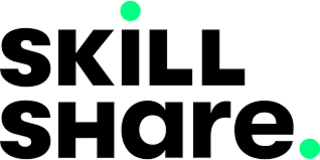
Digital Product Design: Build a Flexible Design System That Lasts 
Brad Frost, a web developer, teaches how to create a lasting, flexible design system for digital products. He covers topics such as how to design better products, how to use design systems, and how to build a system that will last. This course is essential for designers, developers, and product managers. ▼
ADVERTISEMENT
Course Feature
![]() Cost:
Cost:
Free Trial
![]() Provider:
Provider:
Skillshare
![]() Certificate:
Certificate:
Paid Certification
![]() Language:
Language:
English
![]() Start Date:
Start Date:
On-Demand
Course Overview
❗The content presented here is sourced directly from Skillshare platform. For comprehensive course details, including enrollment information, simply click on the 'Go to class' link on our website.
Updated in [March 06th, 2023]
In this 60-minute course, Brad Frost will teach students how to build a custom design system using the Atomic Design method. Students will learn how to conduct an interface inventory to start their initiative, choose the right pilot project to guide their system, build their design system with the atomic design method, and adapt their design system as their needs change. Brad will also share his favorite tools, exercises, and templates to make it easy for students to get started right away. By the end of the course, students will have the tools they need to create a flexible design system that can grow and evolve as quickly as they do.
[Applications]
After taking this course, participants will be able to apply the Atomic Design method to build a custom design system that is flexible and effective. They will be able to conduct an interface inventory to start their initiative, choose the right pilot project to guide their system, build their design system with the Atomic Design method, and adapt their design system as their needs change. Additionally, participants will be able to use the tools, exercises, and templates shared in the course to get started quickly and easily.
[Career Paths]
1. Digital Product Designer: Digital product designers are responsible for creating and maintaining digital products such as websites, mobile apps, and software. They must have a strong understanding of user experience (UX) design, user interface (UI) design, and product design principles. They must also be able to collaborate with developers, product managers, and other stakeholders to ensure that the product meets the needs of the user. The demand for digital product designers is growing rapidly, as companies are increasingly relying on digital products to reach their customers.
2. UX/UI Designer: UX/UI designers are responsible for creating user-friendly interfaces for digital products. They must have a strong understanding of user experience (UX) design principles, user interface (UI) design principles, and product design principles. They must also be able to collaborate with developers, product managers, and other stakeholders to ensure that the product meets the needs of the user. UX/UI designers are in high demand, as companies are increasingly relying on digital products to reach their customers.
3. Product Manager: Product managers are responsible for overseeing the development of digital products. They must have a strong understanding of user experience (UX) design, user interface (UI) design, and product design principles. They must also be able to collaborate with designers, developers, and other stakeholders to ensure that the product meets the needs of the user. Product managers are in high demand, as companies are increasingly relying on digital products to reach their customers.
4. Front-End Developer: Front-end developers are responsible for creating the user interface (UI) for digital products. They must have a strong understanding of user experience (UX) design, user interface (UI) design, and product design principles. They must also be able to collaborate with designers, product managers, and other stakeholders to ensure that the product meets the needs of the user. Front-end developers are in high demand, as companies are increasingly relying on digital products to reach their customers.
[Education Paths]
Recommended Degree Paths:
1. Bachelor of Science in Computer Science: This degree path provides students with the knowledge and skills needed to design, develop, and maintain software systems. Students will learn how to use programming languages, develop algorithms, and create user interfaces. Additionally, they will gain an understanding of the principles of computer science, such as data structures, operating systems, and computer architecture. This degree path is ideal for those interested in pursuing a career in software engineering, web development, or digital product design.
2. Bachelor of Science in Human-Computer Interaction: This degree path focuses on the study of how people interact with computers and other digital products. Students will learn how to design user interfaces, create user experiences, and develop interactive systems. Additionally, they will gain an understanding of the principles of human-computer interaction, such as usability, accessibility, and user-centered design. This degree path is ideal for those interested in pursuing a career in user experience design, user interface design, or digital product design.
3. Master of Science in Digital Product Design: This degree path provides students with the knowledge and skills needed to design, develop, and maintain digital products. Students will learn how to use design tools, develop user interfaces, and create user experiences. Additionally, they will gain an understanding of the principles of digital product design, such as user research, user experience design, and product strategy. This degree path is ideal for those interested in pursuing a career in digital product design, user experience design, or product management.
Developing Trends:
1. Artificial Intelligence: Artificial intelligence (AI) is becoming increasingly important in digital product design. AI can be used to automate tasks, improve user experiences, and create more personalized products.
2. User Research: User research is becoming increasingly important in digital product design. User research helps designers understand user needs, behaviors, and motivations, which can be used to create better products.
3. Design Thinking: Design thinking is becoming increasingly important in digital product design. Design thinking helps designers understand user needs, create innovative solutions, and develop products that are both useful and desirable.
Pros & Cons

Must have foundational course

Easy to understand and implement

Logical and easy to assimilate

Ammo to drive home a point

Excellent class.

None mentioned
Course Provider

Provider Skillshare's Stats at AZClass
Discussion and Reviews
0.0 (Based on 0 reviews)
Explore Similar Online Courses

Digishock 10 Basics: Technologies that can shake the world

Strategic Social Media Marketing

Python for Informatics: Exploring Information

Social Network Analysis

Introduction to Systematic Review and Meta-Analysis

The Analytics Edge

DCO042 - Python For Informatics

Causal Diagrams: Draw Your Assumptions Before Your Conclusions

Whole genome sequencing of bacterial genomes - tools and applications

Running Lean: Raise Your Odds of Building a Successful Product

Slides that Rock: Create an Awesome Presentation about Your Company Product or Service

Product Manager Interview Preparation
 Related Categories
Related Categories
 Popular Providers
Popular Providers
Quiz
 Submitted Sucessfully
Submitted Sucessfully
1. What is the main purpose of a design system?
2. What is the Atomic Design method?
3. What is the first step in creating a design system?
4. What is the main purpose of this course?


Start your review of Digital Product Design: Build a Flexible Design System That Lasts